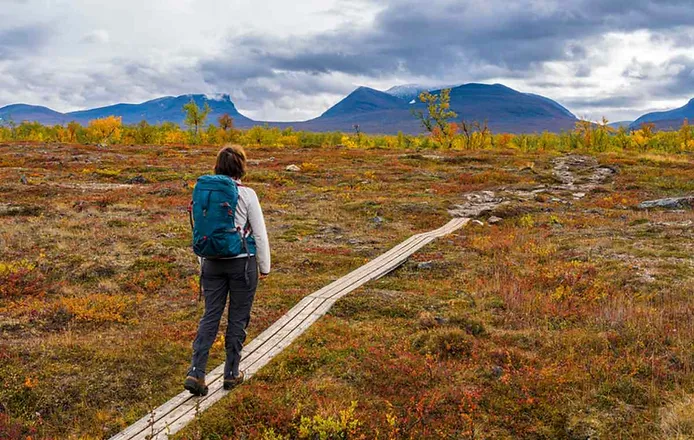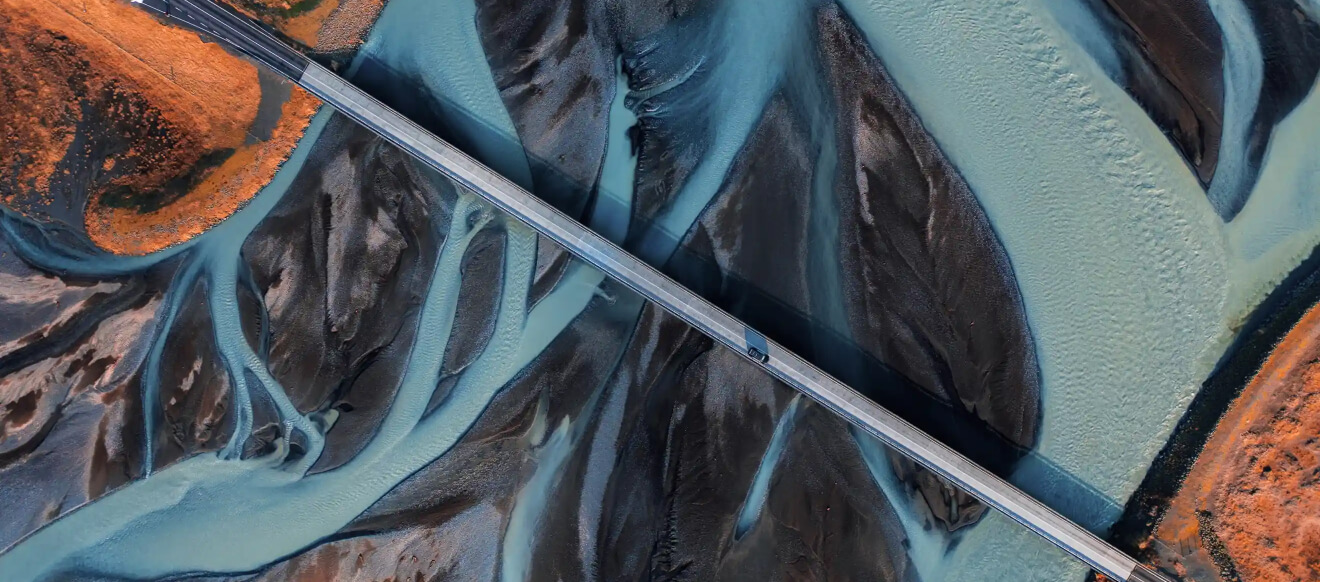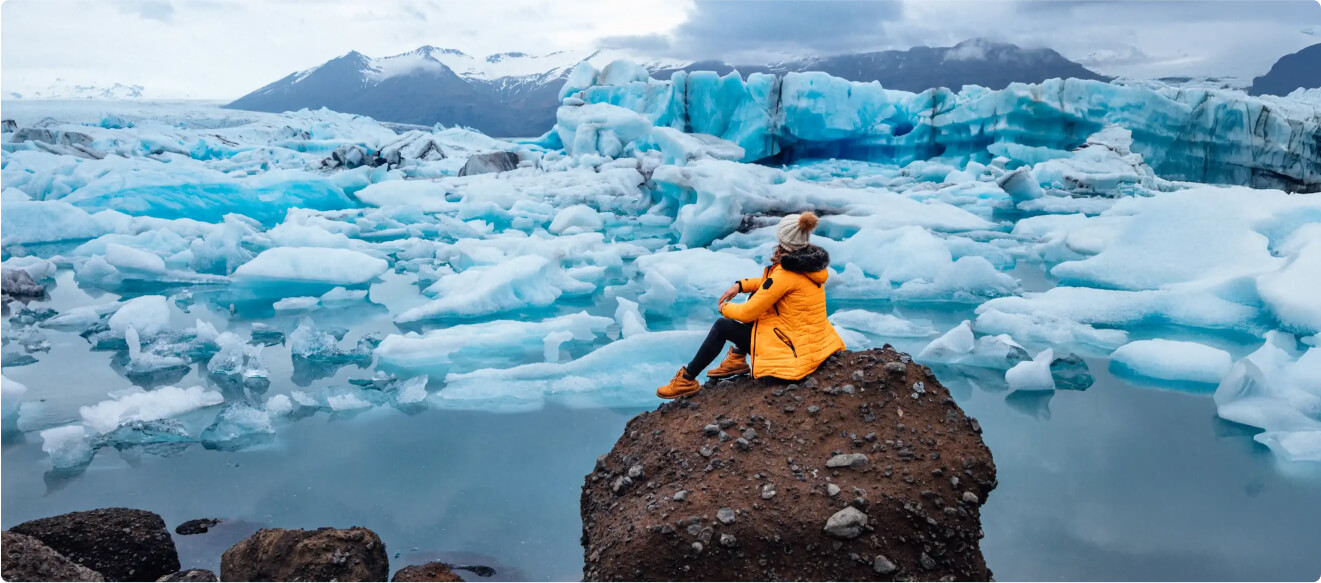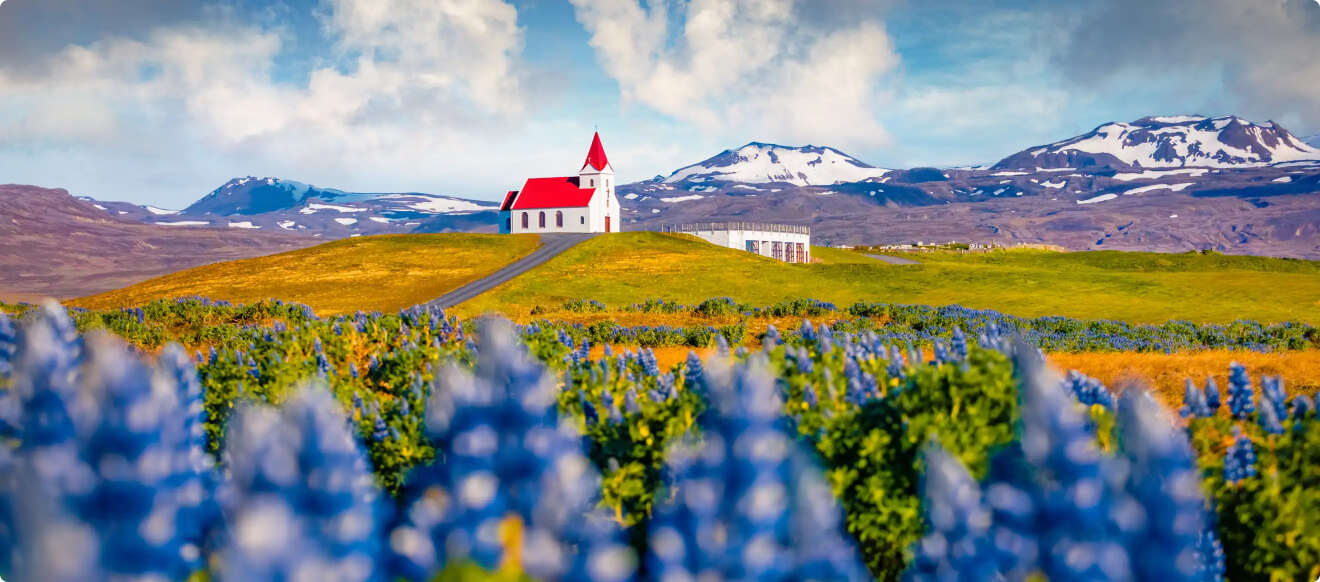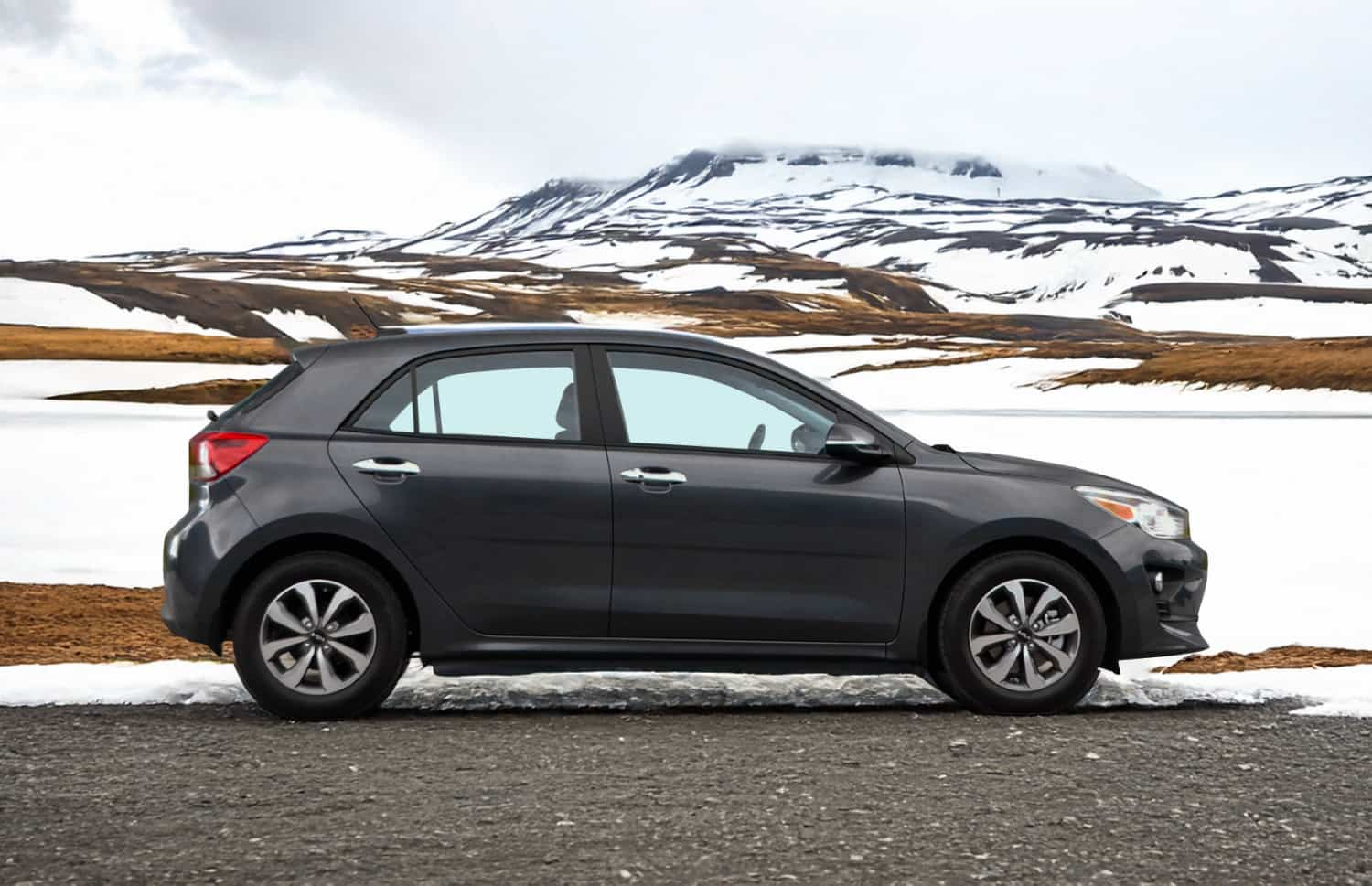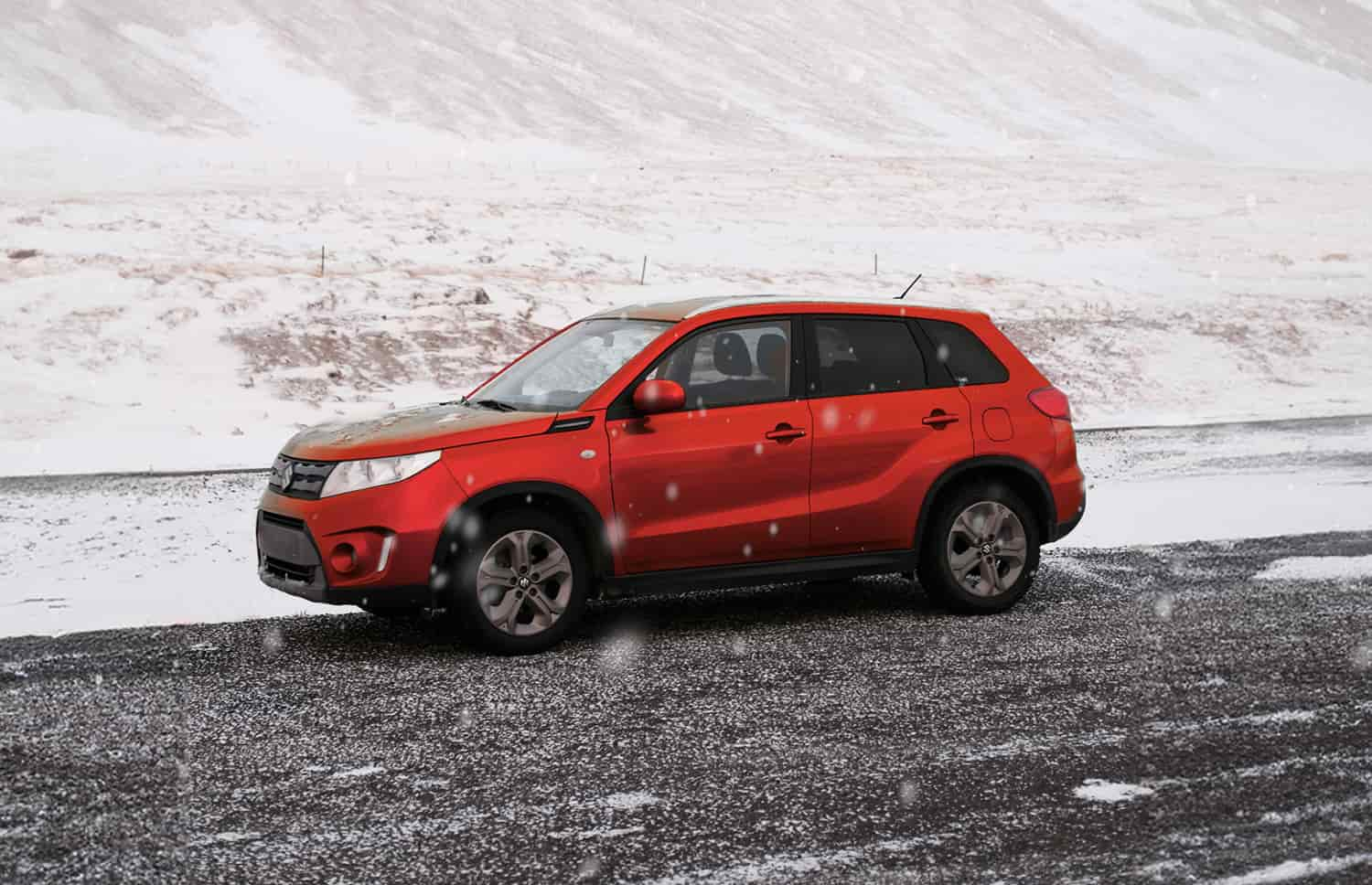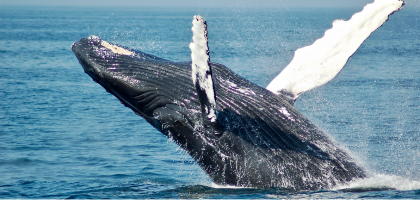Some would say that fall in Iceland is the perfect time to visit the island. That’s because the season can have some added benefits that many don’t think about when they start planning their trip.
In this article, we tell you exactly what you can expect from the season, what the weather’s like, what to pack, what there is to do, and much, much more. So, without further ado, let’s jump right in!
When is Fall in Iceland?
Fall officially falls (couldn’t resist) on the island at the end of August and lasts till early November. September and October are considered to be full-blown fall here on the island. Just take note that the colder northern regions are known for getting an early winter, so be prepared if you’re planning on exploring the northern parts of the country.
Is Fall a Good Time to Visit Iceland?
Fall in Iceland holds many extra perks that you might not even have thought about. But whether fall is the best time for you to visit the island will rely on your personal preferences and requirements, as well as what you have on your Iceland bucket list.
Below, we have created a handy pros and cons overview to help you make your decision:
Pros
-
Fall, from mid-September ahead, can be considered a shoulder season. That means that it falls outside of our busy summer and festive peak seasons, which means that you don’t need to contend with the peak season masses when visiting attractions, trying to find accommodation, etc.
-
The fact that there are no peak season crowds also means that there are no peak season prices, and this is a welcome relief to any holiday budget.
-
Despite the Iceland weather slowly moving towards winter mode, the fall still has some nice days temperature-wise and the harsher weather elements seem to still be on break.
-
Even though the island moving towards winter also means that daylight hours are slowly decreasing, you’ll still have plenty of daylight hours to ensure a jam-packed trip itinerary during fall.
-
Fall in Iceland is any photographer’s dream as the country turns into a spectacular display of color.
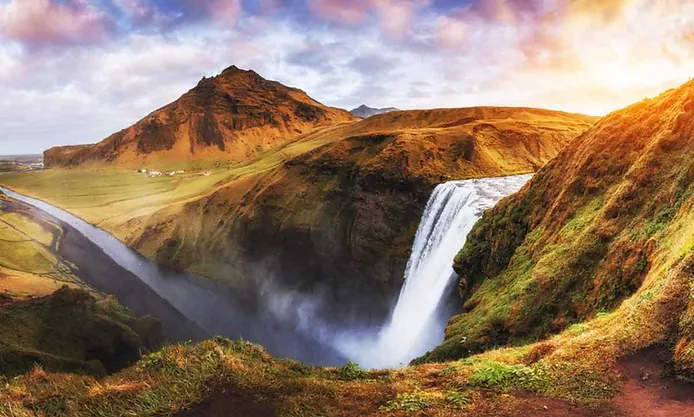
Cons
-
The downside of visiting the island during the “down” season is that operation hours may change or be limited at certain sights and attractions. This could mean that it’s only open certain days of the week or certain hours each day. You’ll just need to double-check before ending up at a closed door.
-
Although the weather hasn’t completely turned yet, it’s still not going to be summer weather, so you’ll need to manage your expectations.
-
Despite still having more than enough daylight hours to have a jam-packed trip itinerary, it is still not enough to experience one of Iceland’s most famous natural phenomenons: the Midnight Sun. So, if that’s on your Iceland bucket list, you’ll need to plan your trip for mid-summer.
The Weather in Iceland in the Fall
Fall may not offer our summer weather here in Iceland, but September and October definitely still offer some of the best weather you can experience on the island with temperatures consistently above the 0-degree mark (September boasts an average of 10-12 degrees Celsius, whilst October has an average of about 7 degrees). There are also no harsh weather elements such as blizzards to be concerned about.
Here’s what you can expect from the weather throughout fall:
August
August in Iceland is a good month to visit if you want to grab the last of the summer weather. Unfortunately, this translates to far more visitors than other months. Although you will need to deal with occasional rainfall and some windy conditions, you won’t need to be concerned about the harsher weather elements. The average temperature during this time also tends to hover around the 10-degree mark.
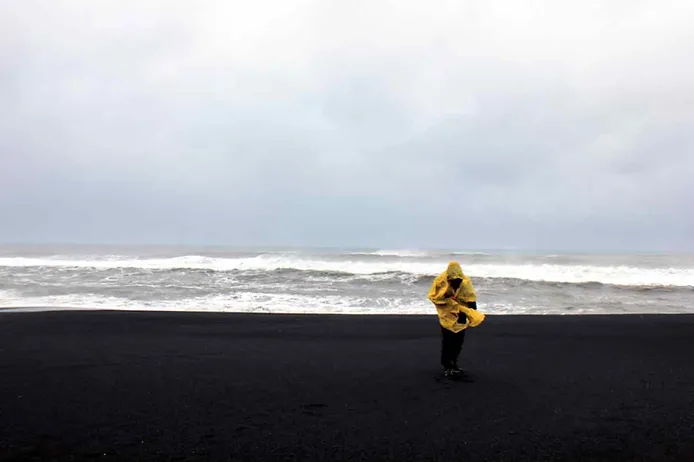
September
During September in Iceland is when you start becoming well aware of the fact that it’s official fall on the island. Whilst the weather is still nice enough to partake in all sorts of outdoor activities, temperatures are steadily decreasing, and the average temperature in Iceland during September is around 7 degrees Celsius.
October
As the shoulder month right before winter, the weather takes a definite turn during October in Iceland. By now, temperatures have dropped dramatically to just 3–4 degrees, the wind has started picking up, and you’ll experience a lot more rainfall.
If you come in late October, there’s even a chance for some snowfall, especially if you’re planning on visiting the colder northern regions of the country.
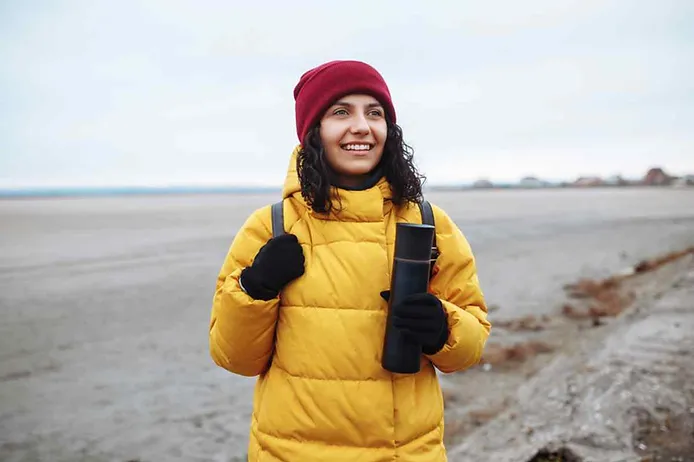
What to Pack for Iceland in the Fall
Visiting a country called Iceland between the summer and winter seasons can leave one quite confused as to what to pack. That’s why we’ve created this handy packing list that you can use as a guide:
-
Raincoat
-
Waterproof jacket
-
Casual jacket
-
Fleece jacket
-
Waterproof pants
-
Hiking pants
-
Casual pants
-
Hat (this will need to be able to protect you against the cold as well as shield your face from the sun)
-
Warm gloves
-
Warm scarf or buff
-
Thermal underwear
-
T-shirts
-
Long-sleeved shirts
-
Warm socks (ones made of wool work very well)
-
Waterproof hiking boots
-
Swimwear (for soaks in one of our hot springs)
-
Flip flops (to wear around the hot springs as well as public changing rooms)
-
Quick-drying towel (so you don’t have to carry wet things around)
-
Sunglasses
-
Backpack (suitable for hikes as well as day outings)
-
Backpack rain cover
-
Water bottle (our water here on the island is of exceptionally high quality – you’ll only need to refill as you go)
-
Electronics such as chargers, adapters, etc.
-
Bathroom vanity along with medications (just remember to double-check the medications in terms of flight restrictions and local laws)

Things to Do in Iceland in the Fall
When visiting Iceland in the fall, you’ll have your pick of things to do and see around the island. Below, you will find a few suggestions of what to add to your trip itinerary:
Go Road Tripping
One of the best parts of traveling Iceland in the fall is that it offers the ideal road trip conditions. Bad weather has not yet turned road conditions into what seems like an advanced driving test, and all roads and routes are open (we have roads that annually close during the colder months of the year). Just keep in mind that the F-roads in Iceland start closing by the end of September if you’ve got the Westfjords and the Highlands on your Iceland bucket list.
And also remember to always keep an eye on the Iceland weather forecast and the Iceland road conditions before heading out. It’s always a good idea to discuss your planned road trip route with your rental agency, so they can advise you as to which type of vehicle will suit your journey best. For example, if you want to explore the Westfjords or the Highlands, there’s no way that you’ll be able to do so without driving a 4x4 vehicle.
The route you’re planning on driving will also impact the type of rental car insurance you’ll need. If you think road tripping sounds like a good way to explore the island, the following are some of our most popular road trip routes:
-
South Coast Way
-
Westfjords Way
Go Camping
Camping in Iceland is not only a great way to imbed yourself in the beautiful Icelandic landscape, but is also a great way to save a ton on accommodation costs.
If you want to save even more, we highly recommend that you get yourself the Caping Card. The card costs only €179 and will give access to a family of 2 adults and up to 4 children to a variety of camping grounds across the country for up to 28 nights.
To give you an idea of the savings you’ll be looking at; campsites usually charge between $10-$20 per person per night, so the Camping Card can make a big difference. Just keep in mind that there are campsites that close in late October, especially in the colder northern regions.
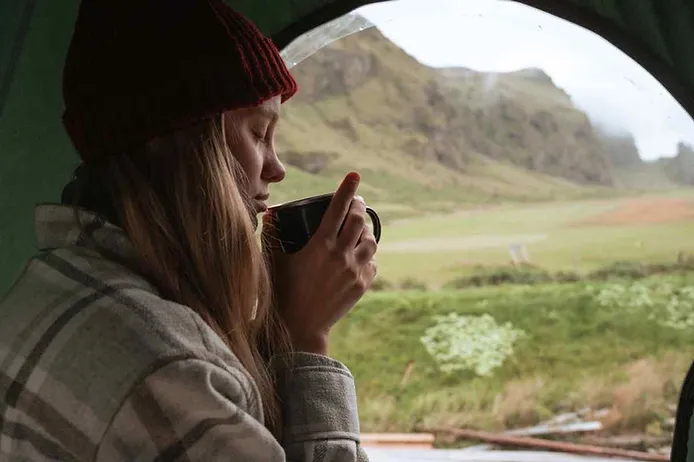
Go Northern Lights Spotting
There are many who travel to Iceland in the fall to go hunting for the Northern Lights. The Northern Lights only appear under very specific conditions, and it can be hard to spot or know where to go looking if you’re not a local. That’s why many book a spot on a Northern Lights tour to increase their chances of seeing this magnificent natural phenomenon.
If you do decide to take on the hunt yourself, the first thing you’ll need to remember is that you need to have darkness to see the light. Sitting in the middle of Reykjavík with its bright city lights is definitely not conducive to seeing the Aurora Borealis.
The best option is to drive out to the Icelandic countryside, where you have the least light pollution. Who knows? Maybe you’re lucky enough to see the bright neon colors dance across the sky.
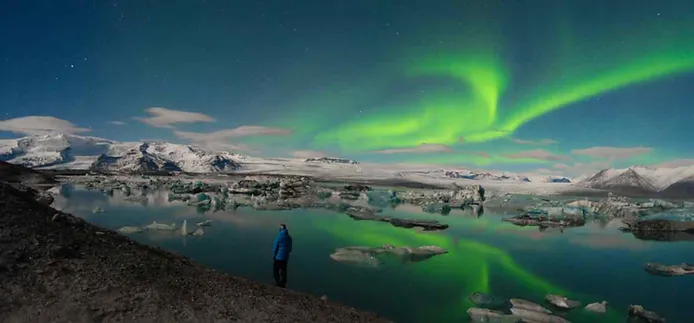
Attend a Festival or Event
Icelanders certainly know how to celebrate, and you’ll always find plenty of festivals and events happening all across the country. Fall is no exception, and you can have a jam-packed social calendar if you want.
These are a few of the festivals and events you can attend during this time:
-
Reykjavik Culture Night (August) – This festival is exactly what it sounds like; a celebration of everything Icelandic culture. From art and music to dancing and traditional cuisine, this festival has the streets of Reykjavík brimming with life.
-
Reykjavik Gay Pride (August) – This is yet another event that many look forward to all year. Just like the rest of the world, gay pride in Iceland serves to celebrate the wonderful diversity of the LGBTQ+ community. With the colorful parade, concerts, and exhibitions, thousands flock to experience the festival each year.
-
Festival of Lights (September) – The Festival of Lights aka Ljosanott is a street concert that happens in Keflavik each year and ends with a spectacular fireworks show (hence the name).
-
Reykjavik International Film Festival (September) – If you are a fan of cinema, this festival is not to be missed. During the festival, you will get to see a wide variety of movies from filmmakers all across the world.
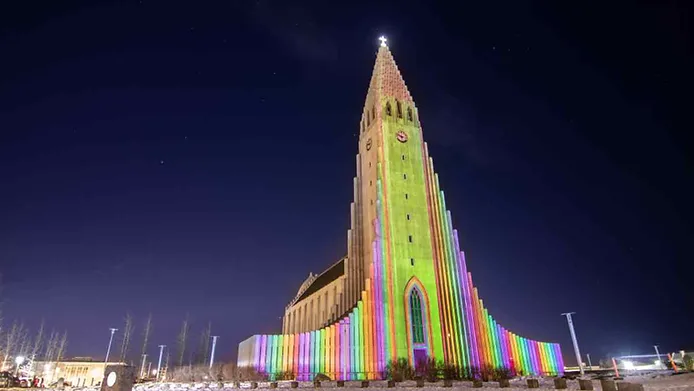
Go Horseback Riding
Fall is the perfect time to take advantage of the last of the daylight hours and good weather to explore the island on horseback. But exploring the magnificent landscapes on horseback is not the only reason why this is a once-in-a-lifetime experience here on the island. Iceland actually boasts its very own breed of horse called the Icelandic Horse (yes, no awards were handed out for creativity when they had to come up with the name).
But as unimpressive as the name is, as incredible are these animals. They look more like ponies than full-grown horses and have an incredibly friendly nature. They can also perform an extra gait called the tölt, and if you go on a riding tour at the end of October, most will already sport their thick, furry coats to protect against the harsh winter weather.
Horseback riding tours can be found all across the island with all sorts of interesting outings such as riding on black sand beaches.
Take a Dip in a Hot Spring
Iceland has plenty of hot springs all across the country. This is because of all the volcanic activity here on the island, heating up the underground water supply. Whilst some of these natural hot springs can still be found in their original form such as at Reykjadalur or Kvika, other hot springs are utilized in man-made geothermal pools such as Blue Lagoon or Myvatn Nature Baths.
The latter usually comes with the added bonus of amenities such as changing rooms, bathrooms, restaurants, spas, and some even offer accommodation. A trip to Iceland isn’t complete without taking a relaxing soak in one of our hot springs. And because of the high mineral content in the hot spring water, a relaxing soak also has a few health benefits, especially when it comes to the skin.
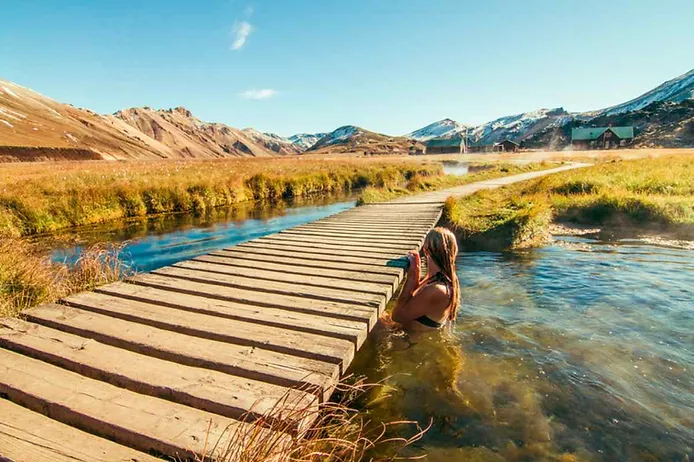
Go Whale Watching
When visiting Iceland in the fall, going on a whale watching tour is an absolute must. That’s because August and September fall under our official whale season, during which many migratory whale species also make the island their home.
You will find whales all along the Icelandic coast with tour operators operating from places such as Reykjavík, but if you’re serious about whale watching we recommend that you either go to Husavik (the whale capital of Iceland) or https://www.carsiceland.com/post/akureyri-iceland Akureyri.
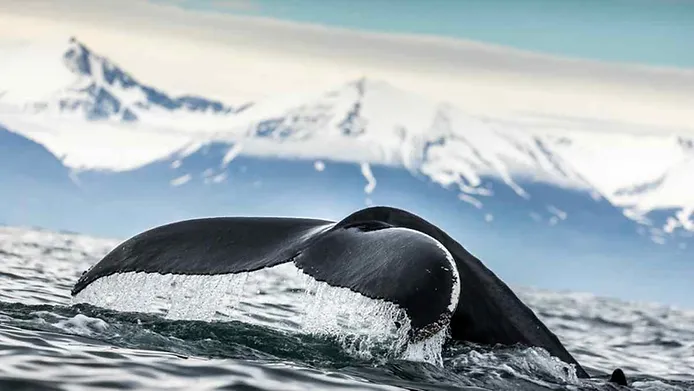
Helpful Tips When Visiting Iceland in Autumn
If this is your first trip to the island, or just your first time visiting during the fall, the following tips will help make your trip a safe and memorable one:
Always Dress in Layers
We have a saying here on the island that says, “you can experience all four seasons in a day in Iceland” – and that is irrespective of the season. So, the best way to be prepared is to dress in layers. This way you’ll always be able to take something off or put something on depending on the weather.
Waterproof Clothing and Gear is Essential
This is not just because of possible rainfall. Waterproof hiking boots are incredibly helpful on the wet, muddy trails of the hot springs, and if you don’t have waterproof clothing and gear when visiting the waterfalls here on the island, you better be prepared to get drenched by the mist and the spray.
Always Wear Sunscreen
Don’t be fooled by overcast weather or the colder temperatures; our sun is potent. And if you don’t put on sunscreen whilst out and about on the island, you will most definitely pay the painful price later.
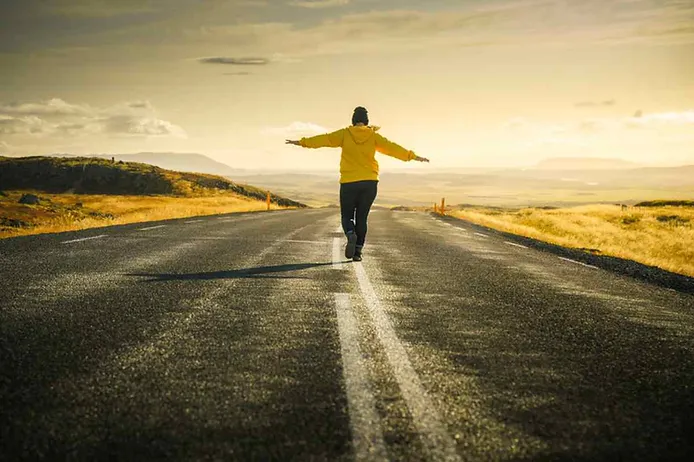
FAQs About Autumn in Iceland
Below, you will find the answers to some of the most frequently asked questions regarding fall in Iceland:
When is the Best Time to Visit in the Fall?
That will all depend on you and the experiences you want to have. If you just want to sidestep the peak season crowds, anytime from mid-September on will work.
For those who wish to spot the Northern Lights, going later in the fall will be your best bet. And if you want to have a jam-packed trip itinerary, it’s best to go at the start of fall whilst you can still take advantage of plenty of daylight hours.
Are the Roads Safe During Fall?
Absolutely. The harsh winter conditions have not yet hit, so there are no ice and snow to navigate (but this can start changing at the end of fall, especially in the northern regions). Whilst you may still experience sudden road closures due to unforeseen circumstances and some bad weather, most roads and routes will remain open.
What Type of Wildlife Can I See in the Fall?
Since our whale watching season falls across a large part of fall, you can expect to see all sorts of interesting whale species such as Minke whales, Orcas, Sperm Whales, and even Blue Whales.
You will also be able to catch the last glimpses of the Puffins in Iceland before they leave for the ocean again. And whilst these guys are rare to spot; the Arctic Foxes will also be around and sporting their new winter coats.
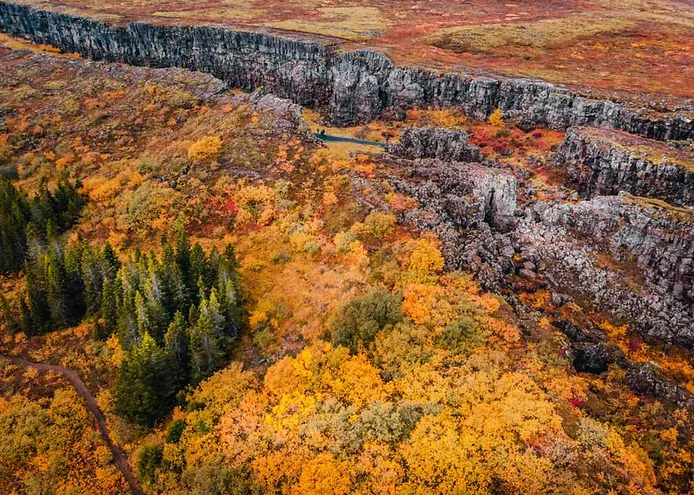
Fall in Iceland; a Season of Possibilities
As you can see, you will have plenty to see and do during your visit to the island in the fall. The best way to explore the island is via a road trip, so we highly recommend that you take advantage of the weather and excellent road conditions.
Rent a car in Iceland, and take on one of our popular road trip routes that offers various attractions and once-in-a-lifetime experiences along the way.




